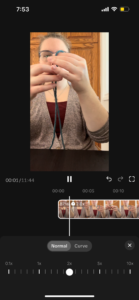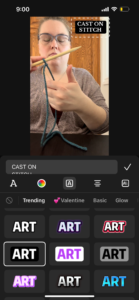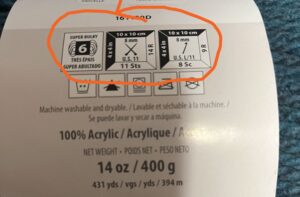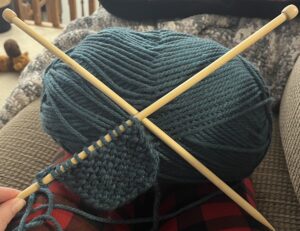Hey EDTC 300! Welcome back to my knitting chronicles and oh man was it a journey this week!!! Just when I was starting to feel confident in the knitting skills I have developed thus far, I was given a reality check. Since I have been using the same needles and yarn for a few weeks now, I decided I wanted to switch it up a bit. Until now I have been knitting with 8 mm needles and a super bulky acrylic yarn as both were recommended for beginners. This week I went out shopping and purchased some smaller needles, 6 mm, and a medium weight yarn. I figured is it really that much harder to knit with smaller needles after I have learned the basics? Spoiler alert, the answer is yes!! I felt like I was just learning to knit for the first time again, as I was beginning to cast on my initial stitches. I was feeling uncoordinated and clumsy with the needles and the stitches didn’t want to go on nicely for me as the yarn was slipping around. This sometimes resulted in stitches slipping off the needles and leaving holes in my knitting where the stitch was dropped. Also, I found my stitches to be too tight at times which is a similar problem I had when first learning to knit. As I had learned, this is something that improves with practice and naturally loosens as you become more relaxed with the movements. Overall, it is hard to pinpoint what exactly makes the smaller needles harder to work with, but I will say it does get better once you use them a bit. Luckily, working with the new yarn was a smoother transition for me. I didn’t find much of a difference working with the medium weight yarn compared to the super bulky yarn.
Mistake Rib Stitch
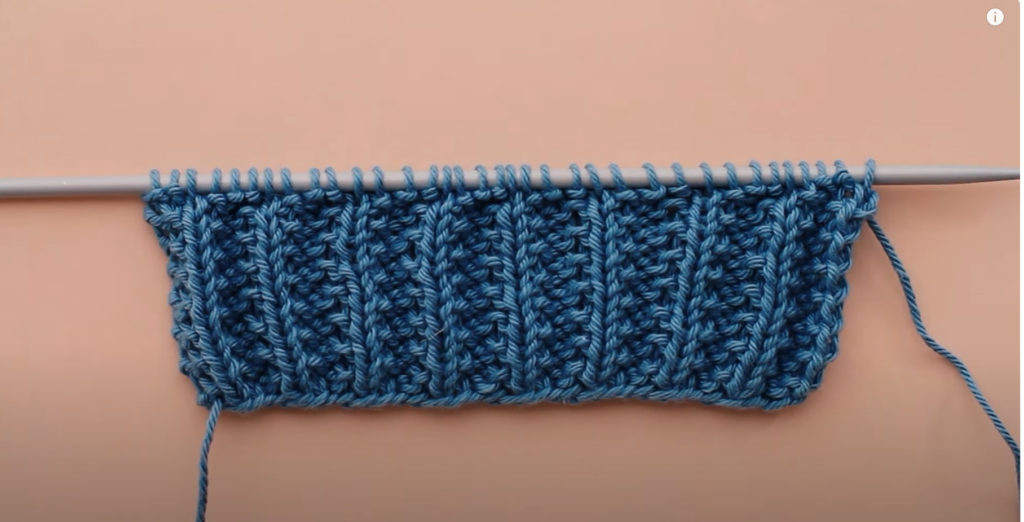
Example of Mistake Rib Stitch from Sheep & Stitch Video
Now comes the next part of my adventure this week. I decided I wanted to try learning the “Mistake Rib Stitch”. This stitch was recommended by many sources as a beginner stitch since you only use the knit and purl stitch, and it is a one row repeat. This means the sequence for the first row just repeats itself row after row until you are done. I figured this stitch would be beneficial for a few reasons:
- Help reinforce the two stitches I have already learned (Knit and Purl)
- Be a good introduction into patterns, since this stitch involves following a one row repeat pattern
- Heard some suggestions of using Mistake Rib Stitch for knitting scarfs, which is a project I want to dive into at some point
The Learning Review
This week I tried to learn from “The Yarnist” on YouTube but I ended up getting frustrated and trying another YouTube video by “The Nervous Knitter”. However, both of these resources left me extremely frustrated and I will admit I went back to my usual go to for knitting help which is, Sheep and Stitch. When doing Mistake Rib Stitch, the stitches casted on have to be a multiple of four (4, 8,12,16, etc.) and then add 3 to your total number of stiches. The purpose of having a specific number of stitches is due to the pattern being a sequence of 2 Knit followed by 2 Purl and repeat until you get to the remaining 3 stitches, which you do 2 Knit and 1 Purl. This seemed pretty basic but when you are switching between Knit and Purl Stitch, you have to move the yarn from the front to the back and vice versa whenever you switch. This is because Knit Stitch requires the yarn to wrap around the back of the right needle, whereas the Purl Stitch requires the yarn to wrap around the front of the right needle. What happens when you don’t switch the yarn is your line of stitching looks like random hoops and twisted yarn. There is no real stitch formed. I should have taken a photo of the product that these mistakes created but I was too frustrated at the moment. I have created a video in order to give you a visual representation of my explanation.
When comparing all three sources I realized they all did a good job at explaining the background information about the stitch. However, The Yarnist and The Nervous Knitter left out some information I consider to be important. This includes:
- They didn’t explain the need to switch the yarn from the front to the back. For a more experienced knitter this might not of been a problem but since I am lacking experience, I didn’t catch onto that on my own.
- They both knit pretty quickly and didn’t slow it down or explain the techniques. I believe they were both thinking their audience was already confident with the combination of stitches being used (knit and purl)
Whereas, when watching the Sheep and Stitch video it included the explanation about switching the yarn and it also slowed down the stitches as she was doing it which allowed you to follow along easier. Also, she included additional text in the video along with her verbal explanations which helped my comprehension. See image below as an example.
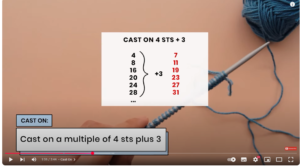
The ironic part of this story is in The Nervous Knitter video she said, “I really don’t know how you can make a mistake on this stitch, but it is called a mistake rib stitch”. Well, I guess she overestimated her viewers’ abilities!
I believe that The Yarnist and The Nervous Knitter have the potential to be good videos for other learners who maybe need less of an explanation and just an general overview, but for me and my learning journey it just wasn’t a great fit!
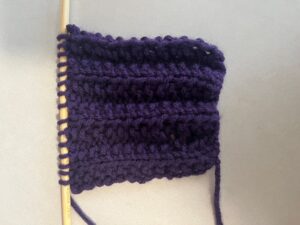
My Mistake Rib Stitch Knitting

 As I have been going along this knitting journey, the one thing I noticed is that it is easy to lose track of how many rows you have knit. I found this particularly hard when doing the stocking stitch last week, where I had to alternate one row purl, one row knit. At one point I got distracted at the end of the row and then couldn’t remember if I had done purl or knit for that row. I thought, I can’t be the only one having this problem, there has to be some kind of knitting tool available to help! Luckily, in my search I stumbled upon
As I have been going along this knitting journey, the one thing I noticed is that it is easy to lose track of how many rows you have knit. I found this particularly hard when doing the stocking stitch last week, where I had to alternate one row purl, one row knit. At one point I got distracted at the end of the row and then couldn’t remember if I had done purl or knit for that row. I thought, I can’t be the only one having this problem, there has to be some kind of knitting tool available to help! Luckily, in my search I stumbled upon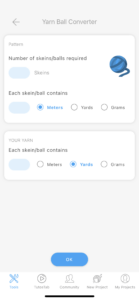
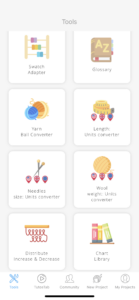
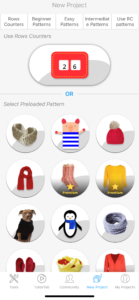
 Now that I have told you about the various functions and what I didn’t like about the app, I am excited to share that I was happy with the row counter function. Which, in reality, was the tool I set out to find anyway! Once I clicked on the row counter, I was able to name my project (in case you have multiple projects happening at once) and then chose whether I was knitting, crocheting, using a machine or using a loom. Once the basic counter was setup, I was able to modify and create two counters. One counter for my knit rows and one for my purl rows. I can switch between the two counters fairly easily by clicking on the button in the upper right corner that says “Part 1” or “Part 2” depending on which counter I am on. I was also able to label the counters “Knit” and “Purl” so that I don’t get confused. A few other handy functions I noticed was “Voice Control”. When activated, this allows you to say the word “Next” and the counter will automatically increase your count by one. This would be convenient if you don’t want to put your knitting down to press the buttons. Another function available was a timer that you can use to time how long it is taking you to do each row. That doesn’t sound very beneficial to me, as I like to be relaxed while knitting and not worried about the time it is taking me, but I am sure some people would use it.
Now that I have told you about the various functions and what I didn’t like about the app, I am excited to share that I was happy with the row counter function. Which, in reality, was the tool I set out to find anyway! Once I clicked on the row counter, I was able to name my project (in case you have multiple projects happening at once) and then chose whether I was knitting, crocheting, using a machine or using a loom. Once the basic counter was setup, I was able to modify and create two counters. One counter for my knit rows and one for my purl rows. I can switch between the two counters fairly easily by clicking on the button in the upper right corner that says “Part 1” or “Part 2” depending on which counter I am on. I was also able to label the counters “Knit” and “Purl” so that I don’t get confused. A few other handy functions I noticed was “Voice Control”. When activated, this allows you to say the word “Next” and the counter will automatically increase your count by one. This would be convenient if you don’t want to put your knitting down to press the buttons. Another function available was a timer that you can use to time how long it is taking you to do each row. That doesn’t sound very beneficial to me, as I like to be relaxed while knitting and not worried about the time it is taking me, but I am sure some people would use it.
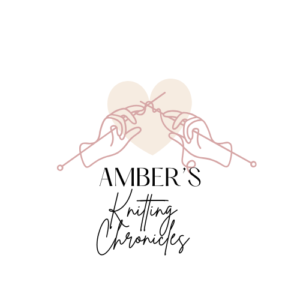

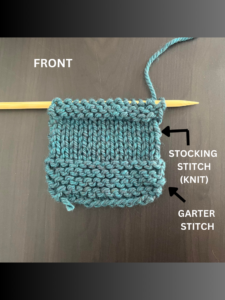 This week I decided to learn the purl stitch as when I was researching different knitting stiches, Sheep and Stitch mentioned that
This week I decided to learn the purl stitch as when I was researching different knitting stiches, Sheep and Stitch mentioned that 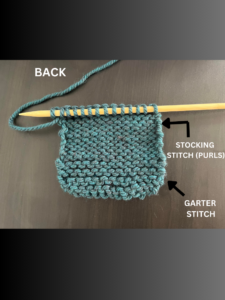 Also, I think it is important to note that while I was practicing the purl stitch I stumbled upon a piece of information I didn’t realize I was missing. I was practicing my purl stitch, row after row, and when I looked at what I was creating I realized it looked the exact same as my previous dishcloth I had made. This left me confused and wondering if I was doing the technique wrong. After some researching, I discovered that since knit and purl stitches are exact opposites of each other when
Also, I think it is important to note that while I was practicing the purl stitch I stumbled upon a piece of information I didn’t realize I was missing. I was practicing my purl stitch, row after row, and when I looked at what I was creating I realized it looked the exact same as my previous dishcloth I had made. This left me confused and wondering if I was doing the technique wrong. After some researching, I discovered that since knit and purl stitches are exact opposites of each other when 